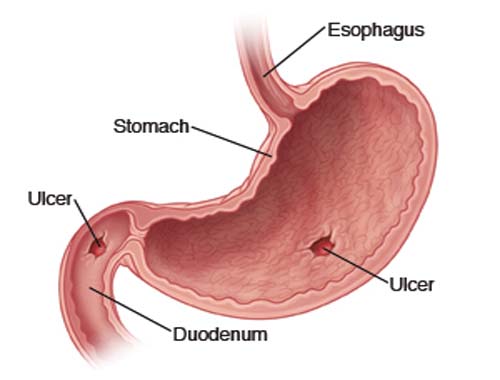Ulcer (Peptic Ulcer, Stomach Ulcer)
Peptic ulcers are open sores that develop on the inside lining of esophagus, stomach and the upper portion of small intestine. The most common symptom of a peptic ulcer is abdominal pain. Peptic ulcers that occur on the inside of the stomach are called gastric ulcers. Peptic ulcers that occur inside the hollow tube (esophagus) where food travels from throat to stomach are called esophageal ulcers. Peptic ulcers that affect the inside of the upper portion of small intestine (duodenum) are called duodenal ulcers. It's a myth that spicy foods or a stressful job can cause peptic ulcers. Doctors now know that a bacterial infection or some medications, not stress or diet, cause most peptic ulcers. Usually presents as chronic, upper abdominal pain related to eating a meal (dyspepsia). Use of nonsteroidal anti-inflammatory drugs (NSAIDs) and Helicobacter pylori infection are the most common causes. There may be some epigastric tenderness, but often there are no other signs on physical examination. Endoscopy is diagnostic and may show an ulcer in the stomach or proximal duodenum. H pylori infection should be sought. In the absence of "alarm" (red flag) symptoms or signs, testing for and treating H pylori and-or empiric acid inhibition therapy is appropriate. Most common complications are gastroduodenal bleeding and perforation, either of which may be the presenting symptom, particularly in patients taking NSAIDs.
